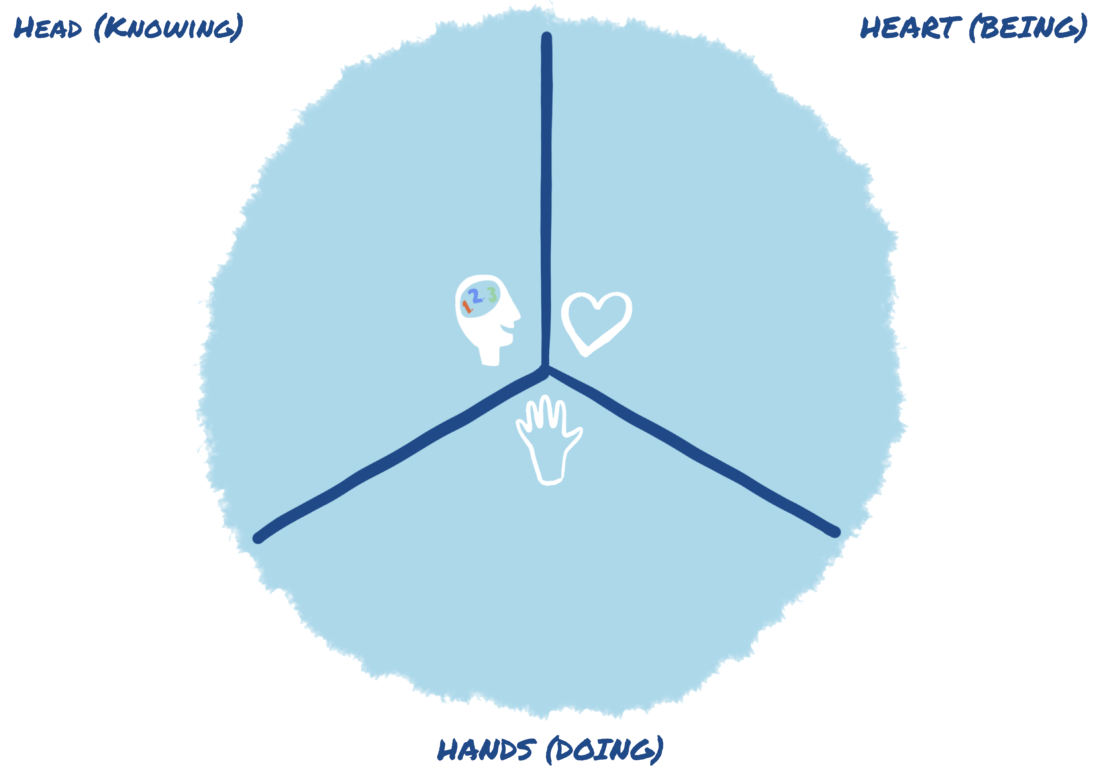Do you know the Head, Heart, and Hands of your impact story?
At Digital Storytellers, we believe that the best social impact stories those that balance the head, heart and hands. This approach to storytelling invites you to explore the rational, emotive and tangible aspects of your story in order to shift mindsets, pull heart strings and spark action.
Let’s break it down…

The Heart
In order for stories to take us on a journey and transport us from our own reality, they need to invoke our emotions. Often the heart is conveyed in the story through a person. We need someone to root for; someone to care about. That person is the beating Heart of your story – it’s core muscle. The Heart is the relatable central character and often has lived experience of the issue being explored. We’re invested in what they’re trying to achieve, the obstacles they’re facing and we want them to succeed.

The Hands
The Hands of the story refers to how you communicate what your project, initiative or idea looks like in action. What is your tangible approach? How does this operate on a day-to-day level? Again, it can be helpful to think about this as the voice of somebody from your project or organisation the who is actively doing work on the ground and can speak to what is unique about the approach and how it creates impact. The ‘Hands’ of your story also helps to establish credibility with your audience, by demonstrating real-world experience.

The Head
The head refers to all of the data-driven aspects of your story which appeal to logic. This might include establishing the ‘who’, ‘what’, ‘when’ and ‘where’ of the story and also any statistics, data and facts relevant to our audience. If we think of the ‘Head’ as a character in the story, it is often the voice which helps us ‘zoom out’ to look at the story on a broader level, and help us to see that the story of lived experience (the heart!) is often connected to a broader systemic issue.
Here’s an example:
A woman is striving to overcome a personal disadvantage. Let’s call her Jenny. We meet Jenny first and quickly empathise with her situation. We want to overcome the obstacles in her path. She is motivated and deeply relatable. Jenny is our story’s beating Heart.
Jenny is being supported by a local case worker, John. John is reliable and shows Jenny how to rise and meet her challenges. This kind and nurturing quality makes John a great ‘Hands’. He gets the nod for Best Supporting Case Worker.
Zooming out from Jenny’s specific case, we hear from Jessica, the Director of the program that employs John and supports Jenny. Jessica is rational, strategic thinker who’s well-researched and has stats at her fingertips that reveal the big picture – that what Jenny is experiencing is a systemic issue. Jessica serves as our wise Head, establishing context and painting the bigger picture.
A sidenote
Something to note for all budding storytellers – sometimes a single character embodies all three aspects of the Head, the Heart and the Hands. Also, there are no set rules to which order the characters appear, but we find that having the Heart at the beginning and end of the story works really powerfully.
Use our ‘Head’, ‘Heart’ and ‘Hands’ worksheet to canvas these aspects of your story, and ensure that you draw from a balance of all three when refining your story further!
See the head, heart and hands in action in A Better Life for Lily. In this case, the head and hands are the same voice!
Trigger warning: This video discusses sensitive topics, including suicide. Some people may find parts of this content confronting or distressing. Recommended support services include: 1800 RESPECT: 1800 737 732 & Lifeline: 13 11 14
Want to start creating your own stories? Join us at our next workshop or sign up for our Online Course!

